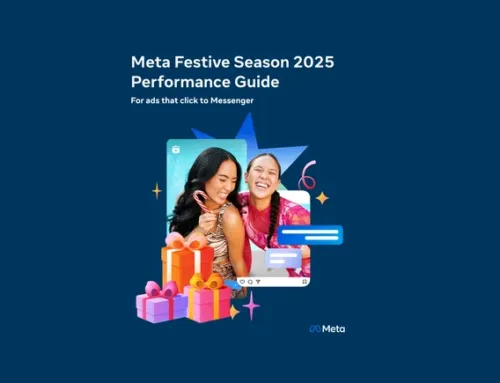BTC, XRP News: Large Traders Take Diverging Strategies on Crypto Market Volatility
November 13, 2025
BTC, XRP News: Large Traders Take Diverging Strategies on Crypto Market Volatility
By Omkar Godbole|Edited by Sheldon Reback
Updated Nov 13, 2025, 9:35 a.m. Published Nov 13, 2025, 9:28 a.m.

- Large BTC traders are employing non-directional options strategies like strangles and straddles to navigate market volatility.
- Latest XRP block flow points to bias for volatility compression.
In a market characterized by choppy price action and uncertainty, large traders of major cryptocurrencies are quietly taking divergent paths.
While bitcoin BTC$103,062.11 investors are bracing for volatility with non-directional option plays, some XRP$2.5019 traders are betting on the opposite, recent block trades on crypto options exchange Deribit show.
STORY CONTINUES BELOW
Over the past week, strangles accounted for 16.9% of bitcoin option blocks traded on the platform, while straddles made up 5%. Both are non-directional volatility strategies, betting on significant price moves, whether up or down. XRP traders, in contrast, shorted strangles, in effect betting against increased volatility.
A strangle involves buying out-of-the-money (OTM) call and put options with the same expiry but different strike prices equidistant from the spot price, offering a cost-effective way to profit from large swings. For instance, if the spot price is $104,700, then the simultaneous purchase of the $105,000 call and the $104,400 put constitutes a long strangle.
A straddle involves purchases of at-the-money call and put options at the same strike price, resulting in a higher initial cost but greater sensitivity to volatility.
Both strategies can lose the premiums paid if the anticipated volatility does not materialize. Note that the bet here is on volatility, and does not necessarily imply a bullish or bearish price outlook.
According to Deribit CEO Luuk Strijers, taken together these non-directional BTC strategies exceed 20% of total block flows, an unusually high figure.
“This suggests a market grappling with uncertainty, where traders anticipate significant price moves but remain unsure about the direction,” Strijers told CoinDesk.
Block option trades are large, privately negotiated transactions involving significant quantities of options contracts, typically executed outside of the open market to minimize their impact on price. They are primarily conducted by institutional investors or large traders and enable the discreet execution of sizable positions without triggering market volatility or revealing trading intentions prematurely.
The preference for non-directional strategies underscores why the crypto options market has been flourishing: It enables traders to speculate on volatility along with price direction, facilitating more efficient risk management.

Deribit’s BTC options market is worth over $44 billion in terms of notional open interest, offering crypto traders the most liquid avenue to hedge risk and speculate.
The ether ETH$3,510.55 market is worth over $9 billion and has featured a bias for a put diagonal spread over the past week.
That is best categorized as a directional-to-neutral strategy that profits from time (theta) decay while also having a positive exposure to implied volatility. In other words, while it is not purely a volatility play, volatility does have a role in its profit potential.
In ETH’s case, straddles and strangles cumulatively accounted for just over 8% of the total block flow over the past week.
Deribit’s XRP options market remains relatively small, with a notional open interest of around $67.6 million. Block trades are infrequent, but tend to be sizable enough to capture market attention when they occur.
For example, on Wednesday, a short strangle trade on XRP was executed over the OTC desk at Paradigm and subsequently booked on Deribit. The trade involved selling 40,000 contracts each of the $2.2 call and $2.6 put options expiring on Nov. 21, representing 80,000 XRP at an average premium of 0.0965 USDC.
A short strangle is a bet on volatility compression and the trader behind the short strangle is betting that macro jitters are priced in, according to Deribit’s Asia business development head, Lin Chen.
“Crypto volatility remains broadly elevated amid a wider risk-off sentiment driven by macro uncertainties, including the U.S. government shutdown and reopening dynamics as well as expectations around a December rate cut,” Chen said in an interview. “XRP’s at-the-money implied volatility has surged above 80%, reflecting this heightened uncertainty.
“The trader is effectively betting that these macro risks are now fully priced in. Their view is that XRP will remain range-bound between $2.2 and $2.6, and the yield on selling the strangle looks particularly attractive,” Chen added.
Shorting a strangle can be a costly strategy if volatility unexpectedly surges, potentially leading to unlimited losses as the underlying price moves sharply beyond the strike prices.
Because of this significant risk, short strangles are generally considered high-risk trades unsuitable for most retail investors unless they have robust risk management and a high tolerance for potential drawdowns.
More For You
Oct 16, 2025

Stablecoin payment volumes have grown to $19.4B year-to-date in 2025. OwlTing aims to capture this market by developing payment infrastructure that processes transactions in seconds for fractions of a cent.
More For You
By Oliver Knight, Omkar Godbole|Edited by Sheldon Reback
23 minutes ago

Bitcoin and ether steadied on Thursday while altcoins faced sharper pullbacks, with AERO, STRK and FET leading declines as market sentiment remained firmly in “fear” territory.
What to know:
- AERO tumbled 18% after unveiling plans to merge with Velodrome, while STRK and FET saw double-digit declines as rallies from earlier in the week cooled.
- Total open interest slipped 1.13% to $142 billion even as trading volume jumped 25%, signaling traders are favoring spot exposure over leverage.
- The dollar index hovered near 100, threatening further pressure on risk assets if it breaks higher as crypto searches for a catalyst to confirm direction.
-
Back to menu
Prices
-
Back to menu
-
Back to menu
Indices -
Back to menu
Research
-
Back to menu
Consensus 2026 -
Back to menu
Sponsored
-
Back to menu
Videos -
Back to menu
-
Back to menu
-
Back to menu
Webinars
Select Language
Search
RECENT PRESS RELEASES
Related Post















